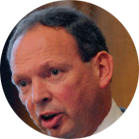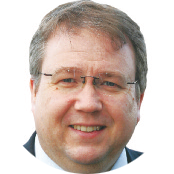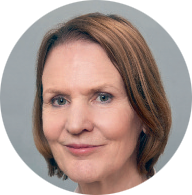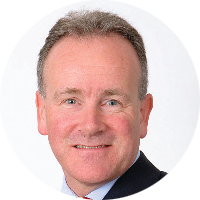Dispensing with convention
In News
Follow this topic
Bookmark
Record learning outcomes
The government plans to allow independents to make use of centralised dispensing by next October, but community pharmacy is cautious

It was NHS England's chief pharmaceutical officer Keith Ridge who first mentioned in September 2015 that the government was looking at the concept of centralised dispensing hubs, which could deal with two-thirds of the country's prescriptions.
Then at the Pharmacy Show in October, Alistair Burt, minister of state for community and social care, spoke of a consultation on changes to medicines legislation to allow community pharmacists to €benefit from central dispensing arrangements if they choose€. He said this referring to Department of Health plans to change the law which currently requires both the dispensing 'hub' and the pharmacy to be owned by the same business and thus puts independent pharmacies at a disadvantage to multiples.
Subject to the outcome of the consultation, Mr Burt says the DH is €aiming to have the changes in place by October 2016€, an announcement that has prompted concern from many independents and community pharmacy bodies.
Many models
So what exactly are we talking about when it comes to 'centralised dispensing', and what is the difference to the 'hub-and-spoke' concept that commentators also refer to?
Put simply, centralised dispensing sees prescriptions come into the pharmacy, get transmitted to another place to be assembled and checked, and then dispatched back to the patient in some way, to be picked up from a collection point which may not even be a pharmacy. Rob Darracott, chief executive of Pharmacy Voice, says this would be €throwing the baby out with bathwater, as healthcare is a 'people business' where we need conversations between pharmacists, patients, carers and their families on decisions around treatment. Anything that removes the opportunity for the conversation is what people should be concerned about.€
In the hub-and-spoke model, the clinical assessment and interaction with patient or carer stays where it is. It's the process of assembling the prescription that is moved to the hub, but the medicines return to the spoke €“ the pharmacy €“ to be given to the patient in the same way as they are now.
Mr Darracott urges clarity when it comes to discussing the different models, saying: €We need to be clear which one we are talking about and what concerns relate to which model, so we can have a reasonable conversation about how they might be helpful and what we want to avoid when it comes to losing patient contact.€
Pros and cons
PSNC acknowledges that changes to regulations to permit the remote assembly of medicines could benefit community pharmacies by €outsourcing some of the workload of dispensing and stock management€, which in turn could €free up staff time to allow greater opportunities to provide support to patients€.
However, chief executive Sue Sharpe adds the caveat that a new dispensing model €on any scale in the UK is untested€, saying €it is by no means certain that in the tight financial environment for community pharmacy the figures will stack up€. And while PSNC supports moves to create a level playing field for pharmacies, Ms Sharpe says they are concerned €that this proposal, and the statement that two-thirds of medicines could be dispensed centrally or remotely, is being seen by some as an opportunity to replace the community pharmacy service with a remote supply operation [which] would be extremely detrimental, primarily in reducing the care and support provided to patients, particularly, older people€.
The National Pharmacy Association has also long urged caution about centralised dispensing, while recognising that the various models should be judged on their own merits. NPA chairman Ian Strachan agrees with Ms Sharpe that a roll-out of centralised dispensing could bring with it €serious risks to the pharmacy network and therefore, ultimately, patients and communities€.
He warns that €people should think very carefully before embarking on radical changes to the system of medicines supply, because the unintended consequences could be serious and irreversible. Could a supply system dominated by centralised dispensing dislocate the current model, which guarantees convenient, face-to-face professional advice, close to where people live, work and shop? This is a big question that requires very thorough examination.€
Cost-saving questions
Mr Strachan, too, questions the cost-saving angle, adding that the NPA is €still waiting to see credible evidence that centralised dispensing could generate real efficiencies across the supply chain, particularly given that we operate in a highly competitive sector that has achieved four per cent productivity gains year-on-year for quite some time€.
Fin McCaul, owner of Prestwich Pharmacy in Manchester, backs that idea that assembly hubs would €enable independents, in particular, to focus more on medicines optimisation rather than just supply€. However, he believes that because of what patients want and need from their medicines €there is probably only 30 to 50 per cent of patients' medicines that could easily and logistically go through a hub, so we would still need a network of community pharmacies€.
His fear is that the government €most probably sees this as a money-saving scheme, which means it risks destabilising the network and driving it forward from a cost solution rather than an outcomes solution€, adding: €Admittedly, we know every sector of government is under significant pressure to make savings. However, pharmacy €“ especially community pharmacy €“ has already done an excellent job of improving efficiencies and saving money for the NHS.€
Someone else spotting the glint of a doubleedged sword is Sandra Gidley €“ community pharmacist, and chair of the English Pharmacy Board, who says: €On the one hand, a lot of community pharmacists are concerned about hub-and-spoke because they don't know where the responsibility lies €“ although it's good we've just decriminalised dispensing errors €“ so a huge amount of clarity and reassurance is needed about that. On the other, it would be helpful if independents were able to access hubs at the same level as the large corporates, which would also free up time for pharmacists to carry out more clinical services.€
A slow erosion
However, Ms Gidley says it is €not helpful when the chief pharmaceutical officer says we don't need so many community pharmacies. It could be because DH don't want to fund pharmacy at the current level but it's going to be a big mistake and couldn't come at a worse time for the pharmacy debate.€
Mark Burdon €“ pharmacist at Burdon Pharmacy Group in Newcastle upon Tyne and PSNC regional representative for Cumbria and the North East €“ couldn't agree more. For him, centralised dispensing is €another example of an un-evidenced and dangerous folly dressed up as a way of saving money for the NHS; dangerous because it threatens the fabric of the community pharmacy network€.
DH disconnect
Ms Gidley and Mr Burdon are not alone in feeling a disconnect between the DH's idea of how community pharmacy could operate more efficiently, and what community pharmacy actually does. Steve Jeffers, chief executive of The Hub pharmacy, says: €Someone in the Department of Health has obviously seen hub-and-spoke dispensing operations in big companies such as Lloyds and Boots, and has been persuaded that it is an efficient way of doing things.€
€The politicians and Keith Ridge seem to think it's a magic answer that will miraculously reduce workloads and so on, whereas in reality it will probably save a bit of time but require a lot of resource to monitor it, and a lot of work making sure the systems are safe. Another unknown is that if it frees up a bit of time, what is the government's expectation for that time €“ for pharmacy to deliver more services, or that they can pay less on dispensing fees as it's a more efficient process?€
What is efficiency?
These proposed efficiencies are also of concern to Numark managing director John D'Arcy, who says pharmacy is already efficient in what it does.
€The DH is driving home the importance of efficiencies, but how do you achieve these, and by what standard are they measured? Pharmacies already handle over one billion prescriptions per year €“ which is a huge volume €“ and are very efficient in doing so,€ he says.
€We do know that hub-and-spoke is working in other parts of the world such as the Netherlands, but they've got a much bigger fee to play with. Will it work in the UK to reveal the efficiencies the DH is after, of 30 per cent from all departments? Efficiency in this context is about plugging the hole of £30 billion funding there is going to be by the end of this parliamentary term, but when it comes to pharmacy we don't control our margin, the government does, and you can only fund efficiency by increasing margins or making cuts.€
The context
With the climate of austerity, efficiency targets, and a commitment from chancellor George Osborne to balance the nation's books, Mr D'Arcy is concerned about what's on the horizon in terms of large-scale cost-cutting. He says: €it feels like a fairly big smash-and-grab is coming€, adding: €Hub and spoke will be part of it, but not the end of it. It's a great idea and has its place, but it's not a panacea by a long chalk.€
Mr Darracott believes that interaction between health professionals and patients is the key to unlocking the efficiencies that the government is after, and it is vitally important that the current patient-facing role of community pharmacy is preserved. He says: €There's a place for automation, of course, but let's work out where the right place is. If we lose sight of that, we lose sight of everything.€
New models for dispensing: there is probably only 30 to 50 per cent of patients' medicines that could easily and logistically go through a hub
On hub and spoke...
 Ian Strachan, NPA: €People should think very carefully before embarking on radical changes to the system of medicines supply, because the unintended consequences could be serious and irreversible.€
Ian Strachan, NPA: €People should think very carefully before embarking on radical changes to the system of medicines supply, because the unintended consequences could be serious and irreversible.€
 Rob Darracott, Pharmacy Voice: €There's a place for automation, of course, but let's work out where the right place is.€
Rob Darracott, Pharmacy Voice: €There's a place for automation, of course, but let's work out where the right place is.€
 Sue Sharpe, PSNC: €It is by no means certain that in the tight financial environment for community pharmacy the figures will stack up.€
Sue Sharpe, PSNC: €It is by no means certain that in the tight financial environment for community pharmacy the figures will stack up.€
 John D'Arcy, Numark: €It feels like a fairly big smashand- grab is coming. Hub and spoke will be part of it, but not the end of it.€
John D'Arcy, Numark: €It feels like a fairly big smashand- grab is coming. Hub and spoke will be part of it, but not the end of it.€
